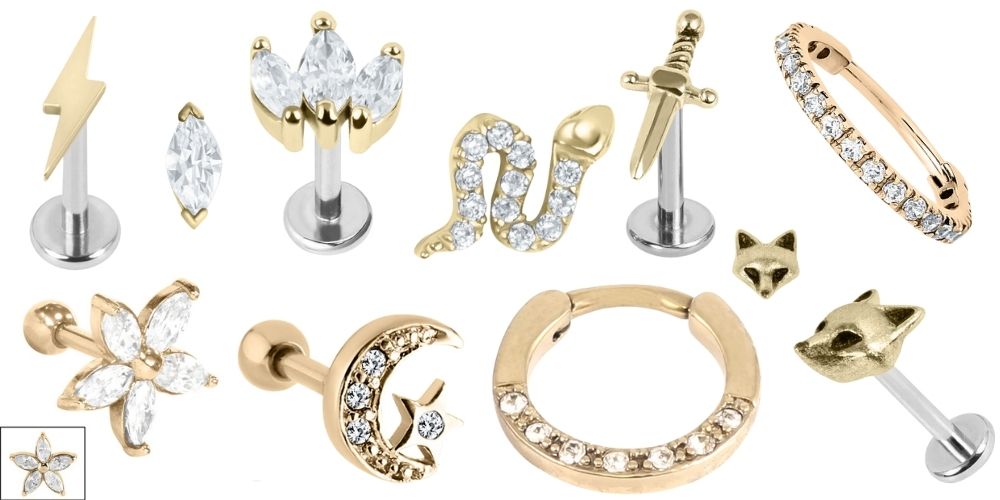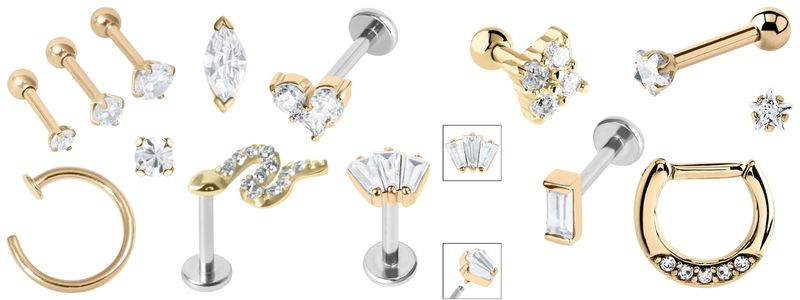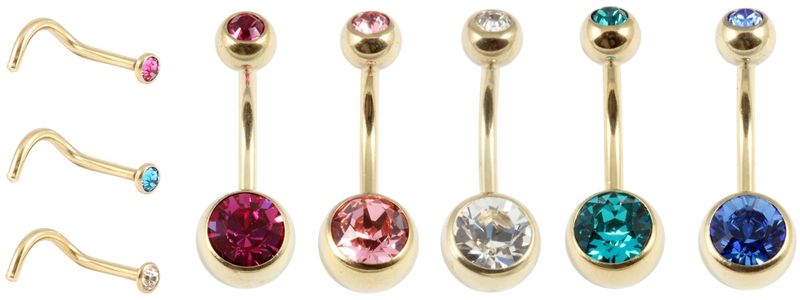What is Zircon Gold Steel & Zircon Gold Titanium Body Jewellery?
Zircon Gold Steel and Zircon Gold Titanium body jewellery are steel or titanium products coated in a Zircon compound using a Physical Vapour Deposition (PVD) process to give a gold colour.
Physical Vapour Deposition (PVD) What Is That?
The high tech PVD (Physical Vapour Deposition) process is a where a coating is deposited onto the jewellery by vaporising Zirconium Nitride (ZrN).
To do this you place your jewellery in a heated Vacuum chamber where an electric voltage is applied to create plasma.
This creates an ion bombardment and results in atomizing the cathode material, in this case Zirconium, into tiny particles. n.b. the Zirconium Nitride is what gives the gold colour.
Next these very tiny particles are deposited onto the jewellery producing a shiny gold coloured coating on the jewellery.
Will The Zircon Gold PVD Coating Come Off?
The short answer is no! The PVD coating is only a few microns thick and very hard to remove. This is due to the way in which the molecules bond to the surface of the product. Therefore the PVD coating process produces a product that is hard wearing and scratch resistant. It’s so good they use it in F1 cars!*
What’s The Difference Between Zircon Gold Steel & Zircon Gold Titanium?
You won’t be able to see a difference between a Zircon Gold Steel and a Zircon Gold Titanium product as the PVD coating is exactly the same on both. The only way you would be able to tell the difference is in the weight as titanium is lighter than steel in mass.
Why Choose Zircon Gold Body Jewellery?
Zircon Gold Steel & Zircon Gold Titanium body jewellery is bio-compatible and can be autoclaved to sterilise.
Fast Fact About PVD Coating!
As the PVD coating is so durable & low friction it’s really useful for loads of things from from tools, watches and medical applications.
*Formula1 (F1) car engines PVD coated parrts to increase energy efficiency by reducing friction between the parts.



